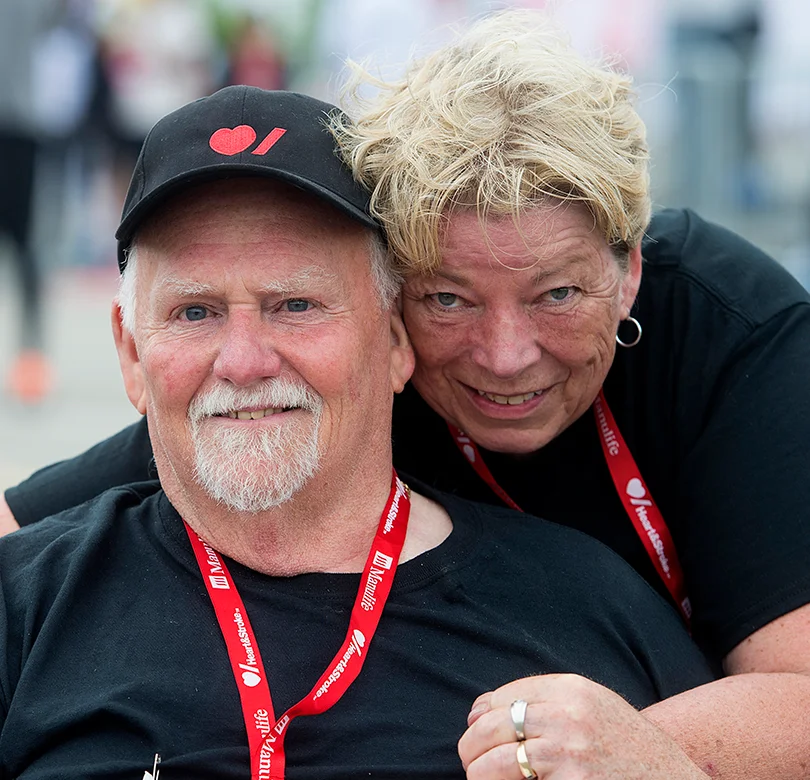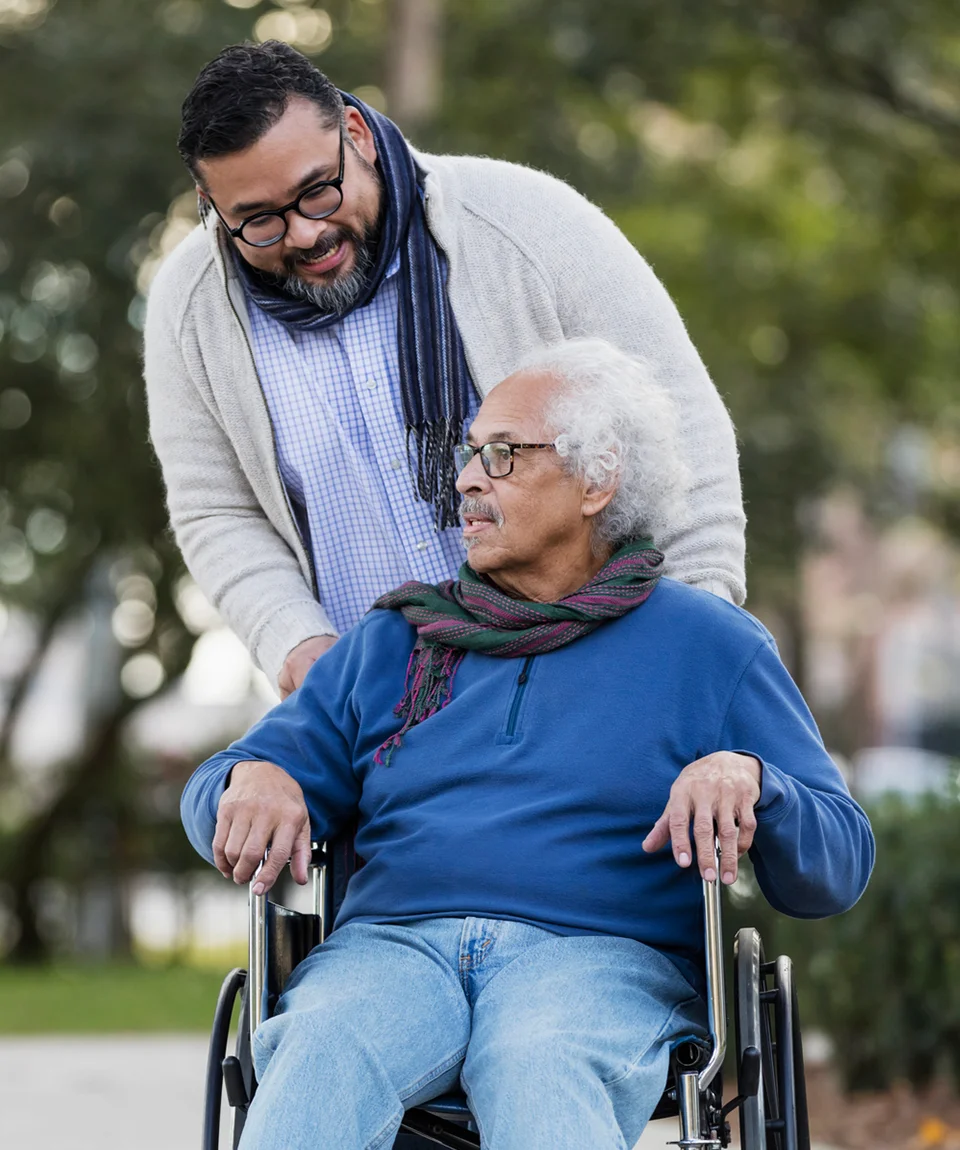The first hours at the emergency department
The first hours after stroke can be very scary and fast-paced. The healthcare team will be working quickly to figure out the type of stroke you have had so that they can take action to prevent further damage to brain cells.
There are three goals for treatment in the first few hours after a stroke:
- To stabilize you by managing breathing, heart function, blood pressure, bleeding, swallowing and other symptoms.
- To make a diagnosis: You should receive a brain scan soon after you arrive at the hospital. This is usually a CT (computed tomography) scan. The scan may show the type of the stroke (a clot or a broken artery). A CT scan also finds the location of the stroke. Scan results help your healthcare team choose the best treatment options. Blood tests may be a part of your assessment.
- To provide early treatment: The type of treatment depends on the type of stroke. Ideally, stroke care takes place in a special stroke unit in the hospital.

Chuck & Lorraine share an unshakable bond after facing stroke together.

Early treatment for ischemic stroke (clot)
If a clot caused the stroke, doctors will decide whether you could benefit from a clot- busting drug. This medication can help reopen blocked arteries in some people with ischemic stroke. It must be given as soon as possible, ideally within 4½ hours after stroke symptoms started. A clot-busting drug can reduce the severity of the stroke and reverse some stroke effects. Not everyone who has an ischemic stroke can receive a clot-busting drug.
After you receive a clot-busting drug, the healthcare team will be watching extra closely for the first day. A repeat CT scan will be done to see how the drug worked and to check for potential complications – usually the next day.
Endovascular thrombectomy (EVT) is a common procedure where doctors insert a thin tube through an artery in the patient’s groin, guiding it with X-ray imaging through blood vessels to the brain. Then, a retrievable stent is used to remove large clots in order to restore blood flow.
EVT saves lives, reduces disability and is now considered the gold standard for treatment of patients with major ischemic strokes. EVT procedures are recommended for eligible patients within six hours of stroke onset, or even up to 24 hours in select patients. However, the faster it can be initiated, the better.
Learn more about breakthrough endovascular thrombectomy research co-funded by Heart & Stroke.
Early treatment for hemorrhagic stroke (bleed)
Hemorrhagic stroke can be very serious and cannot be treated with tPA. It has a longer recovery time than ischemic stroke.
A neurosurgeon will determine with the team if an operation is needed. This might be needed to control the bleeding in your brain, to fix the damaged artery or to lower the pressure in your brain.
The team will check often to make sure symptoms are not getting worse. They will monitor blood pressure and check for alertness, headache, weakness or paralysis, and other stroke symptoms.
The first days in hospital
Two-thirds of people with stroke are admitted to hospital. Each person recovers at his or her own pace. Your care and length of stay is based on your needs. A team of healthcare providers will work with you. Here is what your in-hospital care will focus on:
Understanding what happened
During the first few days after your stroke, you might be very tired and need to recover from the initial event. Meanwhile, your team will identify the type of stroke, where it occurred, the type and amount of damage, and the effects. They may perform more tests and blood work.
Monitoring and managing risk factors
If you had an ischemic stroke, you may be prescribed blood thinners or anti- platelet medications such as ASA (acetylsalicylic acid, Aspirin) to prevent more clots.
Your blood pressure will be checked regularly. If it is high, medication may be prescribed.
If the team suspects your stroke was caused by blocked carotid arteries in your neck, they may do scans. If necessary, they will have you see a surgeon.
Atrial fibrillation – or Afib – is a type of irregular heart rhythm. Afib is a significant risk factor for stroke. You may be tested for Afib and other cardiac problems during hospitalization.
If you have diabetes – a risk factor for stroke – the team will work with you to manage your diabetes.
The team will review other risk factors for stroke and work with you to set goals and make a plan to prevent another stroke.
Preventing complications
The team will check for complications of stroke. Starting treatment early helps to prevent further complications.
If you are unable to move around in bed, the team will be working to prevent clots (deep vein thrombosis) from forming in your legs. They will also try to prevent pressure injuries to your skin. As soon as you are able, the team will work with you to get you sitting, standing and walking safely.
Weakness and balance problems may put you at risk of falling. The team will assess your risk. They will work with you and your family to make sure you understand the risk and how to prevent falls. If the team gives you a mobility device such as a walker, it is important to use it.
You should have a swallowing test before you are given any liquids, food or medication. Problems swallowing, if not identified, can lead to complications such as:
- choking
- inhaling food (aspiration)
- pneumonia
- not getting enough to eat (malnutrition)
- not drinking enough (dehydration).
The team will want to identify any problems with bowel and bladder control early so that training programs can start as soon as possible.
Starting your rehabilitation and recovery
Recovery starts once you are stabilized. The team will work with you to assess your abilities and start developing strategies and therapies to begin your recovery.
Planning for your discharge from hospital
Team members will be looking to see how the stroke has affected your ability to resume day-to-day life. They will start working with you to plan for the next step in your recovery — whether you are going home, to inpatient rehabilitation, long-term care or another living situation.
What questions should you and your family ask?
During your hospital stay, ask lots of questions to make sure you understand what has happened, what to expect and your role in recovery. Most of us remember only a small part of what we are told in healthcare team appointments and meetings. That’s why it is important to keep track of the answers in a journal.
Here are some questions to ask:
- What type of stroke did I have? Was it caused by a blood clot or by bleeding into the brain?
- What part of my brain is affected? What functions have been impacted by the stroke?
- What will my recovery be like? What treatments will I receive? Will I need medication?
- What are the results of my tests? What do they mean?
- Did I receive a clot-busting drug?
- Did the stroke affect my ability to swallow? Will I need a special diet?
- What are my risk factors for another stroke? (this is especially important if you had a transient ischemic attack or mini-stroke.)
- What is the next step in my care? Will I be admitted to hospital or discharged home?
- Will I need rehabilitation? What types of rehabilitation will I be given? How much?
- Will I be given an appointment at a stroke clinic or with a stroke specialist when I leave the hospital?
- What will I be able to do in the next few months?
- What can I expect one year from now?
- What skills do my family and I need to take care of me? Who will show us how to do this?
- What services and resources can help me and my family? How do I access them?
Related information
Know what to expect with your personal stroke recovery journey. Get a free copy of our stroke recovery book Your Stroke Journey.
Transitions and community participation infographic from the Canadian Stroke Best Practices guidelines. (PDF)
